She Wasn’t in Movies or on Billboard Charts—But She Owned the Spotlight
Barbara Roufs may never have been a household name in the traditional sense—she wasn’t a film star or a chart-topping singer. But in the golden era of 1970s drag racing, she was the face. And not just any face—the kind that made crowds go silent, hearts skip a beat, and cameras click nonstop.
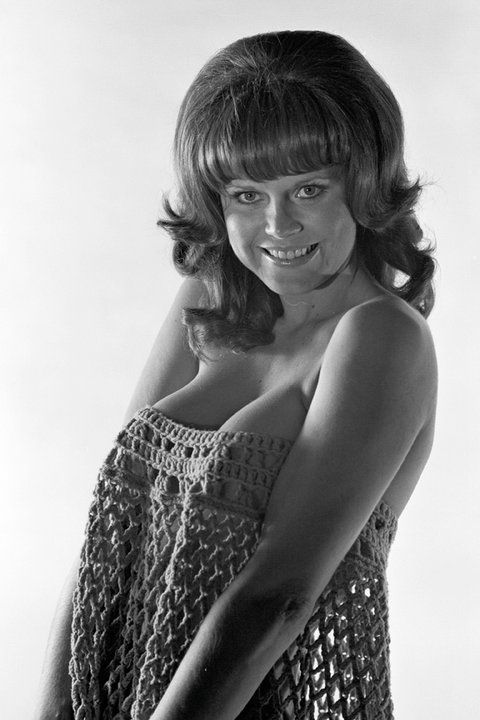
With windswept hair, radiant confidence, and a style that screamed California cool, Barbara Roufs embodied a kind of untamed beauty that couldn’t be bottled or scripted. She was the queen of the trackside—not for the cars she drove, but for the energy she brought to every roaring race. And although her time in the spotlight was short-lived, her image would live on as an emblem of an era that never really let her go.
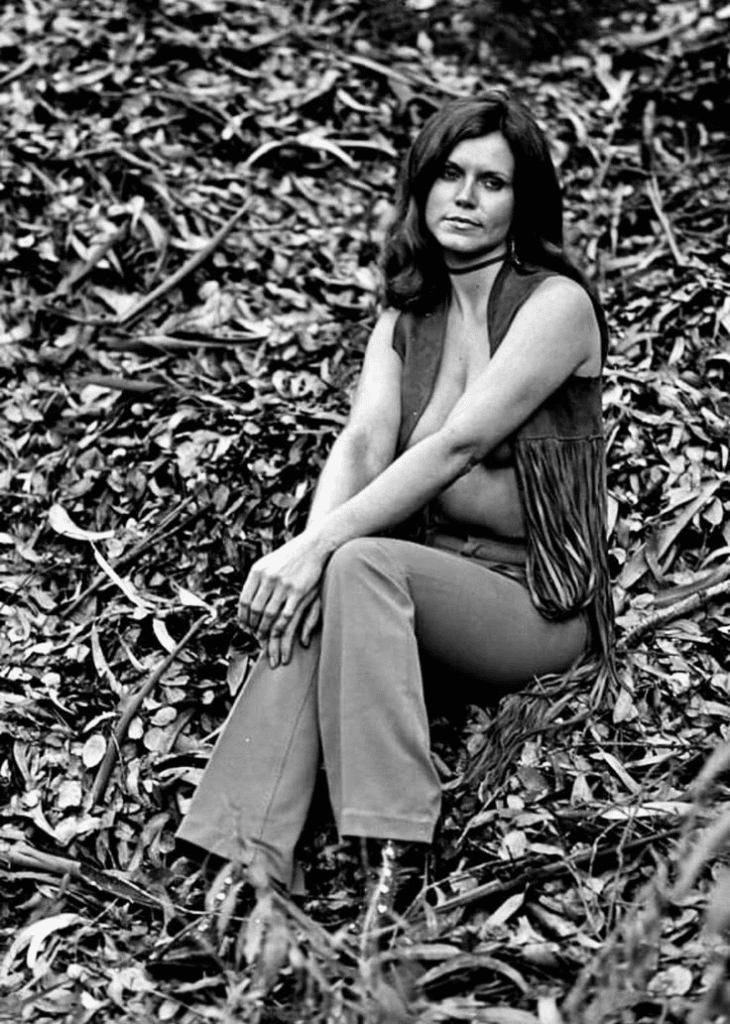
The Rise of a Racing Beauty Queen
Back in the early ’70s, drag racing wasn’t just a sport—it was a spectacle. Engines thundered, crowds cheered, and the sun baked everything in a haze of raw horsepower and adrenaline. But amid the smoke and speed, there was another kind of electricity, and it often came from the presence of promotional models and trophy girls.
Video: Vintage Photos of Racing Trophy Girls Not Suitable for All Ages
Enter Barbara Roufs, a tall, stunning brunette whose look was both girl-next-door and California dream in one unforgettable package. She became the trophy queen for the NHRA’s Southern California drag racing circuit—a job that was part modeling, part performance, and all charm.
Wearing bell-bottoms, halter tops, and platform heels, Barbara stood trackside with a presence that could rival the cars themselves. But it wasn’t just her looks that caught attention—it was her attitude. She had a spark. A freedom. A sense of self that beamed through every photo and moment.
A Style That Defined the Era
Barbara’s look was peak 1970s—carefree yet bold. Her long, sun-kissed hair flowed like a rock anthem. Her outfits were perfectly on-trend, turning heads with flared jeans, fringes, and crop tops that captured the decade’s rebellious spirit.
But what really made her stand out was how natural it all felt. She wasn’t trying to be sexy—she just was. She didn’t chase fame—it found her, trackside, under the hot California sun.
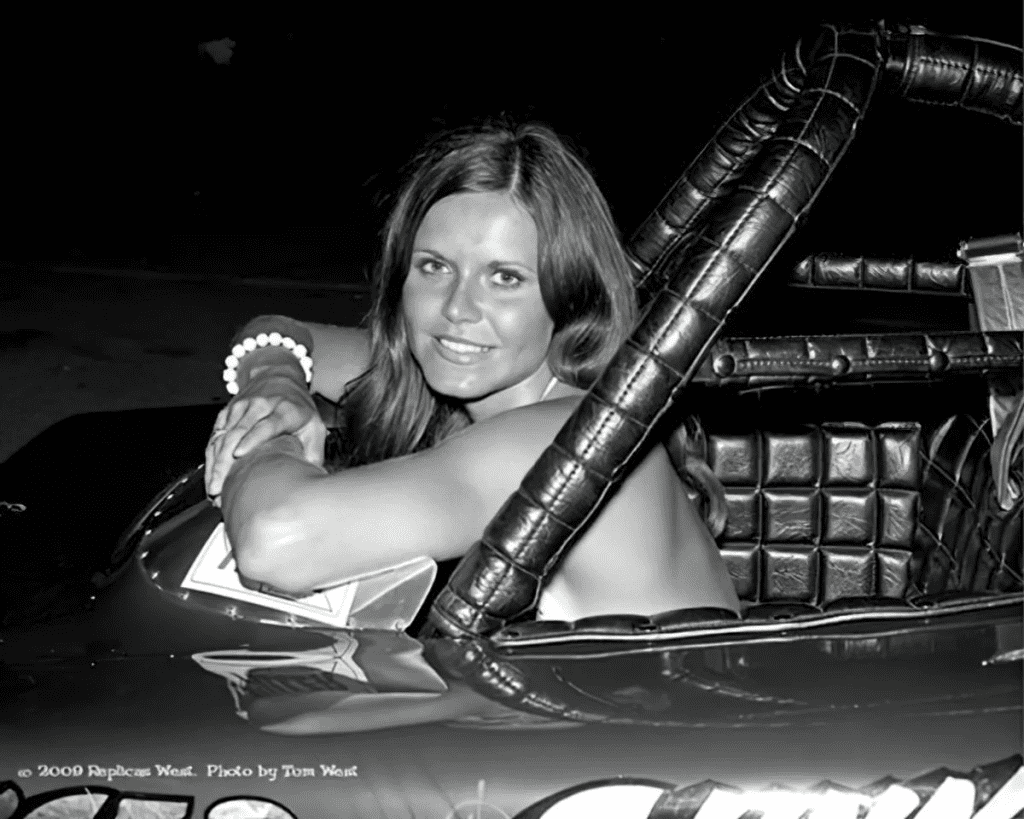
Her image appeared in countless racing photos, posters, and ads. Even decades later, when vintage racing memorabilia resurfaces, her face is often front and center—timeless, fierce, unforgettable.
The Mystery Behind Her Sudden Exit
Despite her growing popularity and rising stardom in the racing world, Barbara’s time in the spotlight didn’t last. By the mid-1970s, she had disappeared from the public eye almost as quickly as she had arrived.
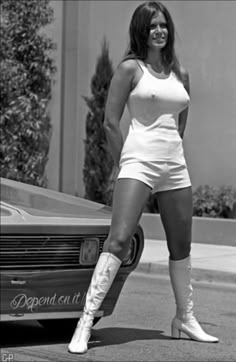
There was no big farewell. No farewell tour. Just silence.
And for years, that silence remained.
It wasn’t until decades later that fans and historians began piecing together her story, only to uncover a truth that left many heartbroken.
Video: 13 Sexy Photos of Classic Drag Racing Ladies
A Tragic End That Shocked Her Fans
In the early 1990s, long after her brief brush with fame had faded into nostalgia, Barbara Roufs tragically took her own life. She was just 47 years old.
The news shook those who remembered her as the radiant young woman who once lit up the drag strips of Southern California. It felt unimaginable that someone so full of life, so vividly remembered, could face such darkness behind the scenes.

Her daughter later confirmed the details, giving fans closure, but also raising awareness of the struggles that even the brightest stars may silently endure.
Barbara’s passing served as a reminder that beauty, fame, and adoration don’t shield someone from life’s deeper battles. It also sparked new admiration for her strength—and deepened the reverence for the legacy she unknowingly left behind.
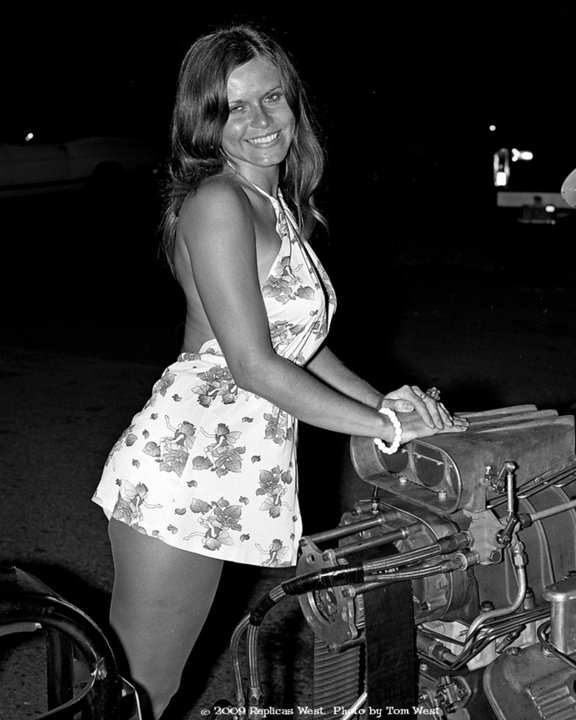
Why Barbara Roufs Still Matters Today
So, why does Barbara Roufs still resonate, all these years later?
Because she wasn’t just a pretty face in a photograph—she was a symbol of freedom, femininity, and wild spirit during one of the most unforgettable decades in American pop culture. She lived fast, loved deeply, and stood proudly in a space dominated by engines and men. And even though she didn’t star in a movie or sing a hit song, she captured the imagination of thousands with nothing but her presence.
Video: Barbara Roufs and Jungle Pam Are Not the Same – Look Closer
She didn’t need a script or a soundtrack. She was her own moment.
And now, in the age of digital rediscovery, her image is more powerful than ever. She’s found a new generation of fans who see in her what the original racing crowds did—a fearless, radiant woman who owned her space with grace.
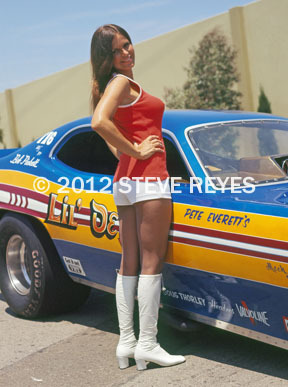
Conclusion: The Spark That Never Went Out
Barbara Roufs may have been a fleeting figure in the grand timeline of American culture, but her impact was anything but small. She embodied a kind of beauty that wasn’t just skin-deep—it was emotional, magnetic, and alive.
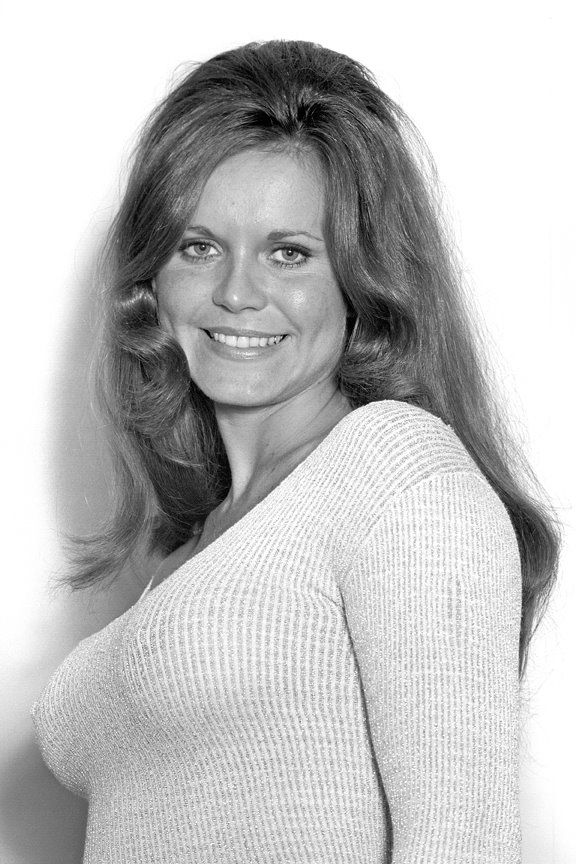
Today, her legacy isn’t just in vintage photos or throwback racing posters. It lives on in every conversation about iconic women who didn’t fit the mold, every tribute to the untold muses of the past, and every fan who still stops and stares when they see that unforgettable face.
She may be gone, but her spirit still races on.
